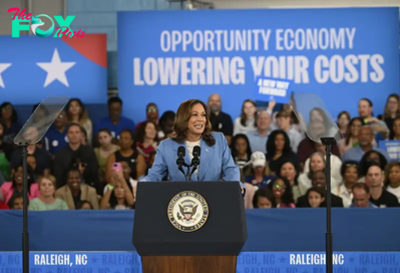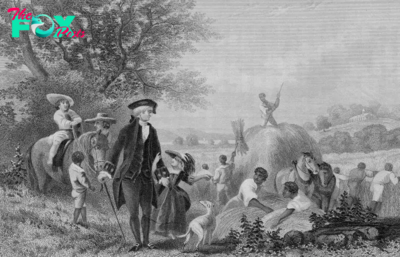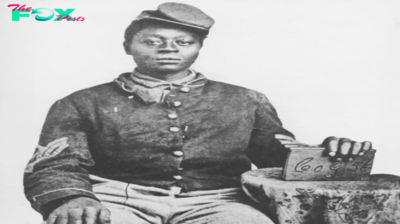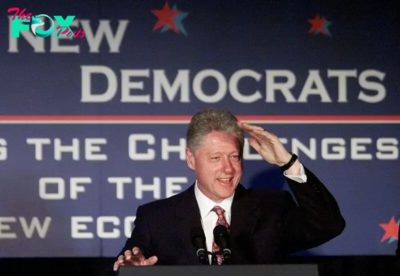History
America Needs a New Approach on Affordable Housing. History Offers a Guide
The U.S. has a housing crisis — one only growing more serious with each day. In the District of Columbia, a recent report by the Urban Institute found that 12% of the city’s population of more than 82,000 residents does not have stable housing. The majority of D.C. residents navigating housing insecurity are people of color, a reality reflected across the country.
The Biden Administration has recognized that housing insecurity is a problem that it can’t ignore, in part because it affects the confidence Americans have about the economy. On Thursday, the Administration announced a bold series of policy proposals, which deployed a public-private approach focused on changing exclusionary zoning, expanding the financing options for affordable housing, and promoting the conversion of empty office space into apartments. These followed up on ideas Biden had proposed in the State of the Union address.
While it is important that the Administration is taking the affordable housing crisis seriously, the long History of attempts to address housing problems in the U.S. reveals these types of public-private initiatives have repeatedly enriched the private sector and done little to help those who need government action the most.
This History suggests that it's time for the federal government to follow the lead of local and state housing activists and create programs that recognize housing is a right not a commodity. This means reconsidering an idea that is barely mentioned in the Administration’s 45-page proposal: public housing. In fact, on Thursday, the same day the Biden Administration announced its proposal, New York Representative Alexandria Ocasio-Cortez and Vermont Senator Bernie Sanders released their own plans to advocate for “Green New Deal for Public Housing” legislation — a sign that some legislators are starting to recognize the essential role that public housing will play if the Administration is to solve the housing crisis.
Public housing in the U.S had its origins in the New Deal. It began as an effort by Franklin D. Roosevelt's Administration to boost the construction industry and provide temporary housing support for struggling Americans. Until World War II, it remained a very small and highly segregated program that primarily benefited working-class whites.
Read More: Read President Joe Biden’s 2024 State of the Union Address
After the war, that changed. The federal government allocated funds for a substantial increase in public housing units to address a national housing shortage and advance urban redevelopment. These funds fueled the construction of large-scale modernist developments like Chicago’s Robert Taylor Homes, which was the largest public housing project in the U.S. with over 4,000 units in 28 identical 16-story buildings.
Initially touted by city planners as “palaces for the poor,” these projects experienced problems of segregation and discrimination almost from the outset and increasingly fell into disrepair due to the limited funds allocated for their initial construction and ongoing maintenance. In the 1960s, many city housing agencies exacerbated the pre-existing problems. They changed their policies to allow occupancy by single-parent households and welfare recipients. Meanwhile, Congress passed a law raising the cap on rents to 30% of a household’s income, which substantially increased the rent for people who worked and drove many them into the private market. This exodus transformed public housing into the option of last resort, inhabited exclusively by the poorest of the poor.
Instead of trying to improve the situation in the 1970s, the federal government turned away from constructing, owning, and managing public housing, and instead adopted private market tools such as vouchers and subsidies in an effort to make housing affordable. They also contracted with private management companies to run preexisting public housing, while greatly reducing the capacity and power of public housing agencies. By the 1980s developments like the Robert Taylor Homes became the sites of major drug and gang activity, turning them into proxies for the problems of public housing and the “inner city.”
In response, Bill Clinton promised to “end public housing as we know it” and introduced the HOPE VI program. HOPE VI became a hallmark of the Clinton years and largely amounted to privatization of public services. The initiative encouraged tearing down many existing federal projects like the Robert Taylor Homes and replacing them with lower-density townhouse style developments that combined market rate housing designed to appeal to the middle class with subsidized units for poor families. To qualify for the houses, poor families had to meet a stringent set of requirements, including having no criminal record and having a job or being enrolled in an employment training program.
These projects benefited the private developers, who built the new housing and surrounding Businesses, but only compounded the problems for tenants. The vast majority of former public housing residents found themselves displaced from their longtime homes. While many received Section 8 vouchers to rent homes, they confronted a highly discriminatory private rental market that left many former public housing residents with few options, most of them in racially-segregated, high-poverty areas. The end result was the exacerbation of housing segregation and economic inequality in many cities, while gentrification spread.
Despite this mixed record, in the early 21st century, public-private projects like HOPE VI remained virtually the only housing initiatives that seemed viable.
That’s changed in recent years. Policymakers from Los Angeles to Rhode Island have launched a range of innovative campaigns to consider alternative ways to increase affordable housing that go beyond simply changing single-family zoning laws and allowing for the construction of Auxiliary Dwelling Units (ADUs). Many of these projects have taken inspiration from longstanding social housing programs in Western Europe, most notably Vienna, where more than half a million residents, both low-income and middle class, live in well-constructed social housing units, spending less than 10% of their incomes on rent.
Read More: How More Cities Worldwide Can Attract Remote Workers
The shape of new programs vary significantly. On one end of the spectrum, Montgomery County, Md., has broken ground on several new mixed-income, government-owned projects. But the projects still rely on a public-private model and contain many echoes of HOPE VI, making them unlikely to eliminate fully the problems of the past.
On the other end of the spectrum, is the work being done by housing groups like Kansas City-based KC Tenants. The group has adopted a definition of “social housing” which points to a way of imagining housing outside the scope of the private market and unavailable for profit or speculation. In using the term “social,” KC Tenants seek to avoid the indelible stigma associated with public housing and to highlight that they envision something very different from the post-World War II massive housing projects or even the HOPE VI townhomes. They are crusading for construction of well-designed housing in desirable parts of the city that serves everyone but the most wealthy. KC Tenants co-founder Tara Raghuveer has deemed this form of “true public housing” the organization’s “north star.” The group is helping push Kansas City closer to that goal. In 2022, by a wide margin, the city passed a $50 million bond for long-term affordable housing.
Read more: Renters Are in Revolt. This Tenant Union Plans to Get Them Organized
This vision of social housing has a chance to undo the mistakes of the postwar era, which stigmatized public housing, and produced substandard and segregated residences for only the poorest of Americans. But for such programs to truly solve the affordable housing crisis, the federal government needs to be involved. The scope of the problem is simply too large for states and localities to tackle. Imaging and designing a federal initiative will take policymakers who can think big, while learning from the mistakes of the post-WWII housing projects. Crucially, they should follow the lead of local housing activists who see housing as a right, not a commodity.

To do so, officials must abandon the narrative that public housing has been a failed social experiment. Instead, they need to sell the public on viewing it as a critical way for the federal government to serve the public good and build a better functioning system of social welfare.
This approach will promote a just policy — one that addresses a problem that has festered for 75 years — and it could also provide a political boost for the Democrats in November and beyond. The poor, working, and middle-class Americans who would benefit most from this vision of public housing are some of the people most dissatisfied with the Biden Administration.
Fixing the housing crisis and creating a broad scale public housing program that makes these groups’ lives better promises to give these crucial constituencies a reason to turn out to vote.
Lily Geismer is a professor of History at Claremont McKenna College where she focuses on political and urban History. She is the author of Left Behind: The Democrats’ Failed Attempt to Solve Inequality.
Made by History takes readers beyond the headlines with articles written and edited by professional historians. Learn more about Made by History at TIME here. Opinions expressed do not necessarily reflect the views of TIME editors.
-

 History1w ago
History1w agoWhy People Should Stop Comparing the U.S. to Weimar Germany
-

 History1w ago
History1w agoFlorida’s History Shows That Crossing Voters on Abortion Has Consequences
-

 History1w ago
History1w agoThe 1994 Campaign that Anticipated Trump’s Immigration Stance
-

 History2w ago
History2w agoThe Kamala Harris ‘Opportunity Agenda for Black Men’ Might Be Good Politics, But History Reveals It Has Flaws
-

 History2w ago
History2w agoLegacies of Slavery Across the Americas Still Shape Our Politics
-

 History2w ago
History2w agoKamala Harris Is Dressing for the Presidency
-

 History2w ago
History2w agoWhat Melania Trump’s Decision to Speak Out on Abortion Says About the GOP
-

 History2w ago
History2w agoThe Long Global History of Ghosts



























